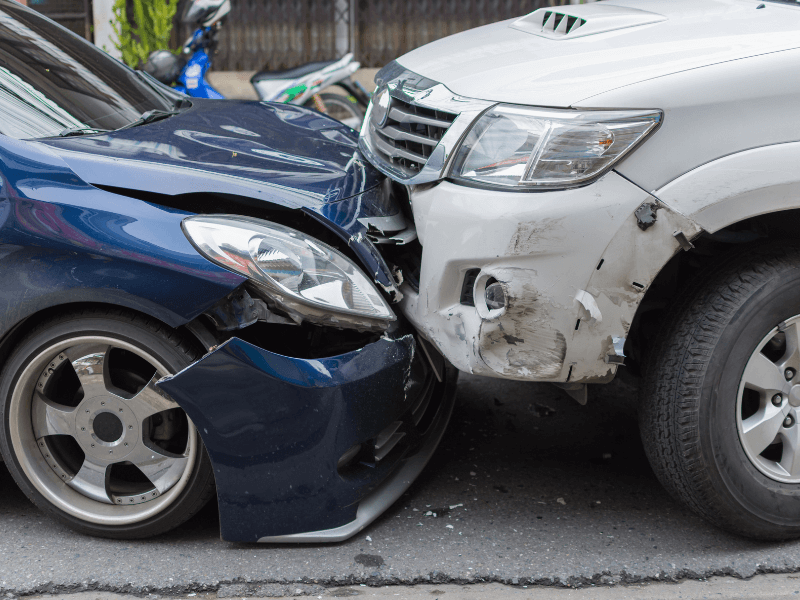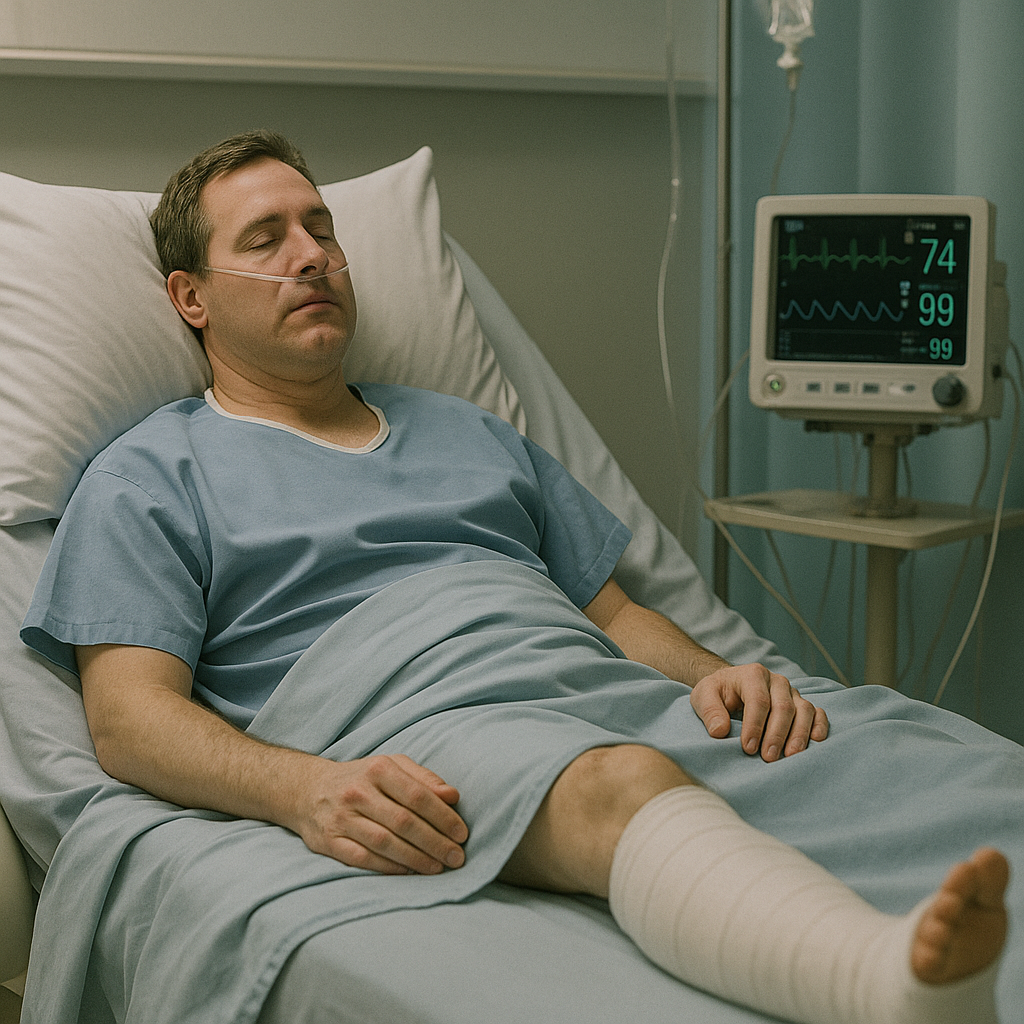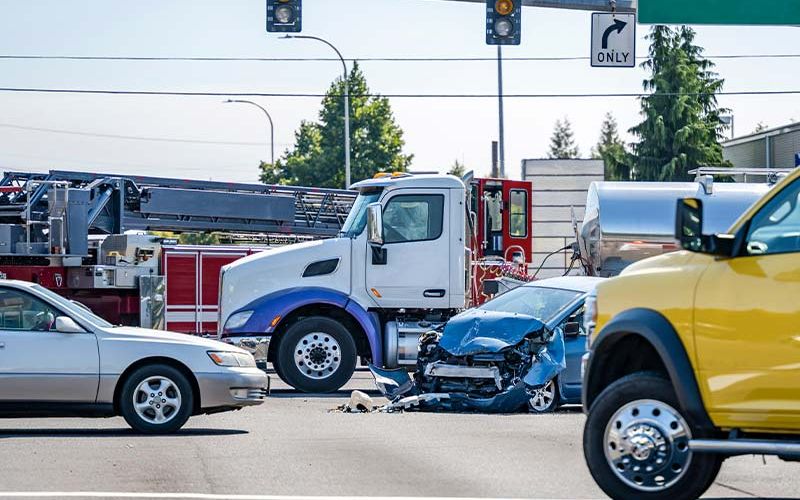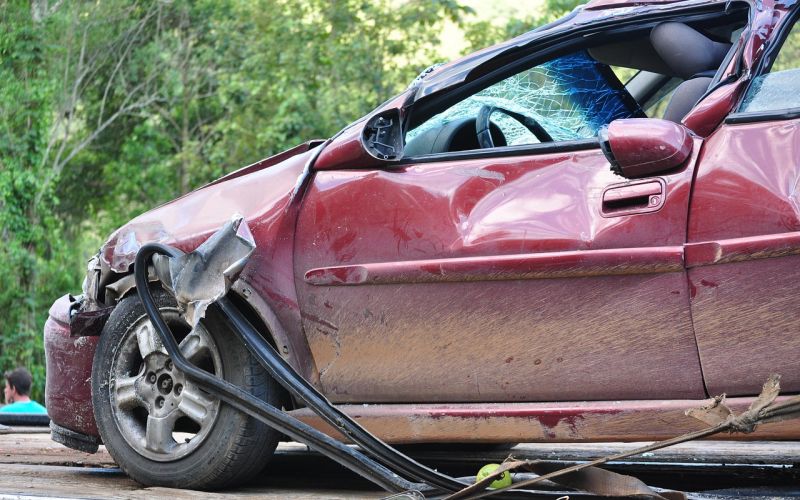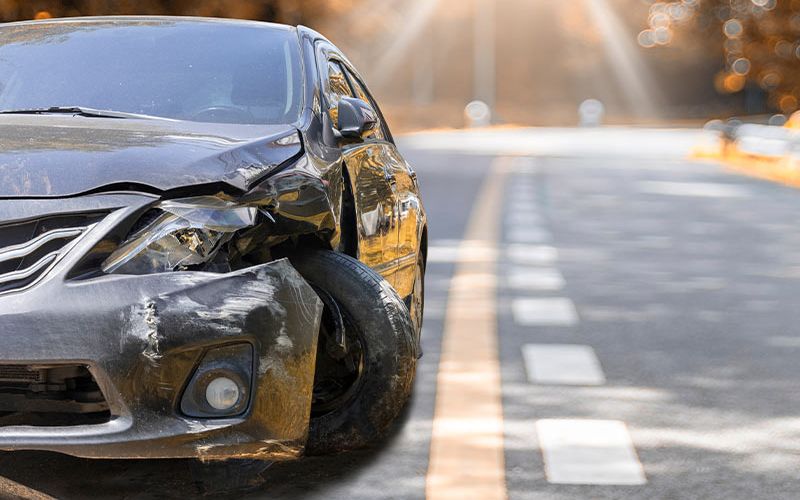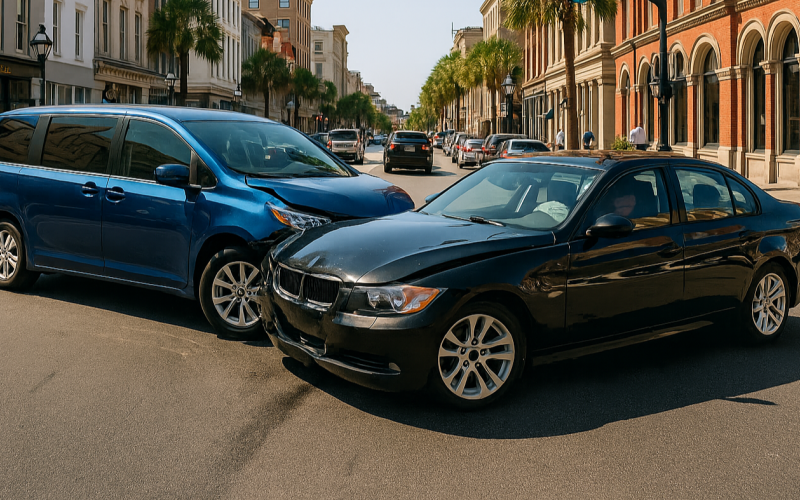Head-On Collisions | How Car Accident Victims Can Fight Back
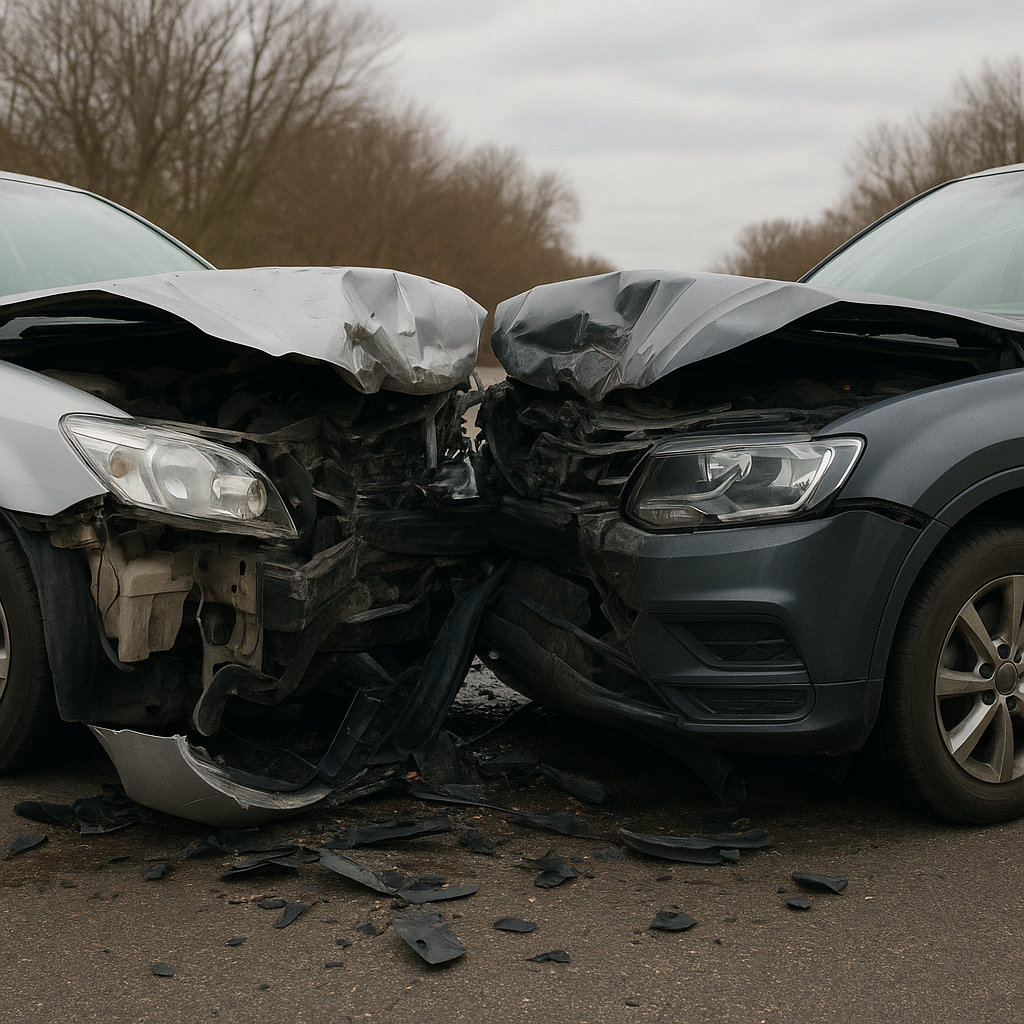


Key Takeaways:
- Head-on collisions often result in catastrophic injuries due to the extreme forces involved, making legal representation critical.
- Liability may fall on negligent drivers, trucking companies, or even government entities, and South Carolina’s comparative negligence laws can affect your compensation.
- Uninsured/underinsured motorist coverage and MedPay may help cover losses if the at-fault driver lacks adequate insurance.
Head-on collisions can be life-altering — and recovering compensation shouldn’t add to your burden. The experienced South Carolina car accident lawyers at HawkLaw are here to fight for your rights and secure the justice you deserve. Contact us today for a free consultation*.
A head on collision occurs when two vehicles traveling in opposite directions collide front-to-front. This type of accident is one of the most severe types of accidents. Head on collisions often result in catastrophic injuries or fatalities because of the combined force of both vehicles upon impact. Whether you’re driving a car, riding a motorcycle, or cycling, head on collisions can leave victims with lasting physical, emotional, and financial burdens.
At HawkLaw, our experienced head on collision lawyers in South Carolina acknowledge the devastating impact these accidents can have. Our team is dedicated to helping people who have been victims of head on collisions across South Carolina, from Greenville to Charleston, secure the compensation they deserve. If you’ve been injured in a head on collision, we’re here to fight for you.
Why Are Head On Collisions So Dangerous?
Head on collisions are extremely dangerous due to the tremendous forces involved. The energy released when two vehicles traveling at high speeds collide head on is significant, resulting in severe damage and injuries. Understanding the physics behind these collisions can illuminate their perilous nature.
Physics of Head On Collisions
In a head on collision, the kinetic energy of both vehicles combines, resulting in a powerful impact. For example, if two cars, each traveling at 50 mph, collide head on, the effect is similar to a single vehicle hitting a sitting object at 100 mph. This doubling of impact force dramatically increases the likelihood of severe injuries or fatalities.
Upon collision, the vehicle’s structure is designed to absorb some impact energy through crumple zones. However, the remainder of that force transfers to the vehicle’s occupants, resulting in sudden deceleration and causing the body to move violently, potentially leading to:
- Traumatic Brain Injuries (TBIs): There is a wide range of injuries in this category, ranging from concussions to coma and more.
- Chest Injuries: When an accident causes the body to collide with the steering wheel or airbags, it can lead to rib fractures, lung injuries, or cardiac contusions.
- Lower Extremity Injuries: Legs and feet can be crushed or broken due to intrusion into the passenger compartment.
- Whiplash: This occurs when the neck snaps forward and backward, possibly injuring soft tissues and vertebrae. While most people recover from whiplash within 2-3 months, some live with this painful injury for years.
The severity of these injuries underscores the critical importance of vehicle safety features and the use of seat belts. However, even with these precautions, the forces in a head on collision can overwhelm protective measures, leading to catastrophic outcomes. These injuries tend to be even more severe in a motorcycle accident.
What Are the Leading Causes of Head On Collisions?
Head on collisions, while less common than other kinds of accidents, often result in serious injuries and even fatalities. Understanding the primary causes can aid in prevention and highlight areas where drivers need to exercise caution.
Driver Negligence
A significant number of head on collisions stem from driver negligence, which includes:
- Distracted Driving: Any activities such as texting, eating, or adjusting the radio cause distraction from focusing on the road and oncoming traffic, increasing the risk of accidents.
- Drunk Driving Accidents or Impaired Driving: Driving a vehicle while under the influence of alcohol or drugs impairs your ability to operate the car safely.
- Fatigue: Drowsy drivers may fall asleep at the wheel or experience microsleeps, which can cause them to drift into opposing lanes.
- Speeding: Excessive speed reduces the driver’s ability to react to unexpected situations, making it difficult to maintain control and stay within the correct lane.
Road Design and Conditions
Certain road features can contribute to head-on collisions:
- Undivided Highways: Undivided highways increase the risk of vehicles crossing into oncoming lanes.
- Sharp Curves: Limited visibility and the need for precise curve handling can lead to lane departures if drivers are inattentive or speedy.
- Poor Road Maintenance: This includes potholes, faded lane markings, and insufficient or missing signage, and can cause drivers to veer into oncoming traffic.
- Adverse Weather Conditions: Rain, fog, ice, and snow can diminish visibility and traction, raising the risk of losing control and veering into oncoming lanes.
By recognizing these factors, drivers can take proactive steps to mitigate risks, such as staying alert, adhering to speed limits, and adjusting driving behavior according to road and weather conditions. When other drivers don’t take those precautions, you can trust the South Carolina car accident attorneys of HawkLaw to protect your rights and future.
Who Is Liable for a Head On Collision in South Carolina?
Depending on the circumstances of the accident, several parties may be held responsible in South Carolina.
- Negligent Drivers: The most common liable party, especially if the driver was distracted, impaired, or violating traffic laws.
- Trucking Companies: If a commercial driver causes a collision in a truck accident, the trucking company may be liable.
- Vehicle Manufacturers: Defective vehicle parts can lead to loss of control and subsequent collisions.
- Government Entities: Poor road design or maintenance can contribute to accidents, potentially exposing municipal or state agencies to liability.
How South Carolina’s Modified Comparative Negligence Rule Affects Liability
In South Carolina, the at-fault party is the one who pays for the damages and losses you sustain. Fault is determined by examining evidence such as:
- Police accident reports
- Witness statements
- Traffic camera footage
- Vehicle damage analysis
- Accident reconstruction testimony
But sometimes there is more than one at-fault party, and that can affect who pays. Under South Carolina’s modified comparative negligence rule, even if the injured party is partially responsible for the accident, they can recover a percentage of the damages. For example, if you are found to be 20% at fault for a head on collision and the total damages amount to $100,000, you would be eligible to recover $80,000 after the 20% reduction.
However, South Carolina’s rule follows a 51% bar. If you are found to be 51% or more at fault, you are barred from recovering any compensation. This aspect of the law makes it essential to prove that most of the fault lies with the other party involved in the collision.
Insurance companies often use the modified comparative negligence rule to their advantage by shifting as much blame as possible onto the victim to minimize their payout. For example, if the opposing party claims that you were partially distracted by your phone at the time of the accident, even if you were the one who was hit by another vehicle, they may argue that this distraction contributed to the crash. This could reduce your compensation significantly or even bar you from recovering damages altogether if they push your fault percentage above 50%. Our head on car wreck lawyers in South Carolina can fight back on your behalf so you aren’t denied the compensation you deserve.
What Happens When the At-Fault Driver Is Underinsured/Uninsured?
Victims can turn to their insurance policies if the at-fault driver lacks sufficient insurance coverage. South Carolina requires drivers to carry uninsured motorist (UM) coverage, which can help you when the at-fault driver has no insurance.
Additionally, underinsured motorist (UIM) coverage can be utilized when the at-fault driver’s insurance is insufficient to cover the damages. Review your insurance policy to understand the extent of your UM and UIM coverage.
Note: if you opted for Medical Payments coverage, or MedPay, you can use that to offset your medical care regardless of who is at fault. MedPay can be used for deductibles and medications, and other medical expenses that your health insurance doesn’t cover.
Head On Collisions Can Lead to Catastrophic Injuries
The severe nature of head on collisions often results in life-altering injuries. Understanding these potential injuries highlights the importance of seeking immediate medical attention and legal assistance. The most serious ones include:
- Traumatic Brain Injuries (TBIs): Ranging from concussions to severe brain damage, TBIs can have long-term cognitive and physical effects.
- Spinal Cord Injury: Paralysis (complete or partial) can occur as the result of a head on collision, necessitating lifelong care.
- Fractures: The force of impact can cause multiple bone fractures, requiring surgeries and extensive rehabilitation.
- Internal Injuries: Multiple organs can be damaged, leading to life-threatening conditions if not promptly treated.
- Death: Head on collisions accounted for nearly 30% of all fatal accidents in 2022, per the National Safety Council.
Injuries Specific to Children
Children are particularly vulnerable to head on collisions due to their smaller size and still-developing bodies. Common types of force-of-impact child injuries include:
- Brain Injuries: Even with child safety seats, head on collisions can cause significant head trauma in children. Because children’s brains are still developing, pediatric brain damage can compound over time. That means the child’s cognitive delays are more likely to get worse, not better.
- Chest Injuries: Chest injuries (like rib fractures and lung contusions) are common due to the pressure from seat belts or impact on the seat in front.
- Growth Plate Fractures: Children’s long bones have cartilage at the end of them. These are their growth plates, and damage to these areas can leave a child permanently disfigured.
- Spinal Injuries: Children’s spinal columns are more flexible, making them susceptible to spinal cord injuries during a severe collision.
Properly securing children in age-appropriate car and booster seats is essential to minimizing injury risks in head on collisions.
Frequently Asked Questions About Head On Collisions in South Carolina
How Does a Car Accident Lawyer Prove the Other Driver Is to Blame?
A South Carolina car accident lawyer from HawkLaw can investigate the collision by assembling evidence such as witness statements, traffic camera footage, police reports, and accident reconstruction analysis. Our team may also examine vehicle damage and obtain testimony to establish driver negligence.
Should I See a Doctor After a Head On Crash, Even If I Feel Fine?
Yes, you should see a doctor immediately after any car accident. Some injuries may not present symptoms right away. Prompt medical evaluation protects your health and provides necessary documentation for your injury claim.
How Long Do I Have to File a Car Wreck Claim in South Carolina?
In South Carolina, you generally have three years to file a personal injury claim from the accident date. Missing this filing window can result in losing your right to seek compensation.
Which Seat Is Safer in Head On Collisions: the Front of the Back?
Surprisingly, the front seat may be safer than the back seat in more modern cars.
While front-seat occupants are closer to the point of impact, back-seat passengers are not immune to injuries. The lack of front airbags and the potential for being thrown forward increase the risk of injury for back-seat passengers. A 2019 study by the Insurance Institute for Highway Safety found that the back seat was less safe than the front in the event of a head on collision.
What Damages Can I Claim for a Head On Car Accident?
Victims of head on collisions can claim various damages, including:
- Medical expenses (current and future)
- Lost wages and earning capacity
- Pain and suffering
- Emotional distress
- Property damage
- Loss of consortium
What If My Loved One Dies From Their Injuries While the Claim Is Pending?
If a victim passes away due to injuries sustained in a head on collision while their claim is pending, the claim can transition into a wrongful death claim. An attorney from HawkLaw can explain how that transition occurs, and help you pursue compensation for funeral expenses, loss of income, and emotional anguish in additional to any other damages.
Can I Afford a Head On Collision Attorney in South Carolina?
At HawkLaw, we work on a contingency fee basis, meaning you pay no upfront fees.* If we don’t win, you don’t pay*. Our goal is to make legal representation accessible to all car accident victims in South Carolina.
Do You Have a Car Accident Lawyer Near Me?
HawkLaw proudly serves clients across South Carolina, with offices in Anderson, Charleston, Columbia, Greenville and Spartanburg. Our experienced car accident lawyers in South Carolina are ready to help you seek justice after a head on collision.
Injured in a Head On Collision? Our Lawyers in South Carolina Fight Back
If you or a loved one has been injured in a head on collision, you don’t have to face the aftermath alone. HawkLaw’s dedicated car accident lawyers in South Carolina are committed to fighting for the compensation you deserve. Contact us today for a free consultation*.
John D. Hawkins
John Hawkins is the Founder and CEO of HawkLaw He has been licensed to practice law in South Carolina since his graduation with honors in 1994 from the University of South Carolina School of Law, where he was on the Law Review and Order of Wig and Robe.
-
$3,000,000*
Trucking Accident Settlement
-
$1,005,000*
Car Accident Settlement
-
$575,000*
Personal Injury Settlement
"*" indicates required fields


